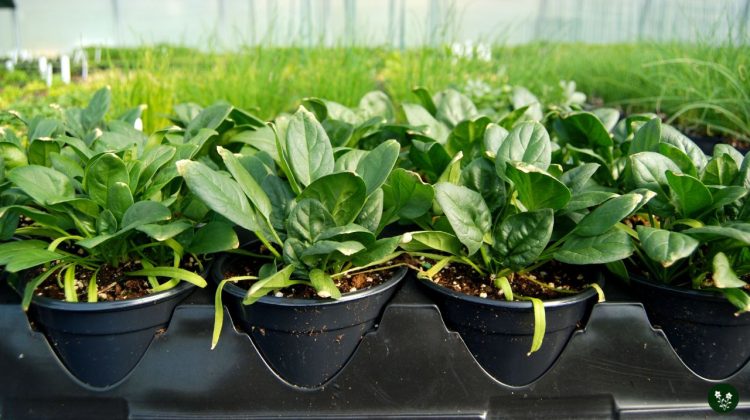
Are you interested in growing spinach but don’t have a lot of outdoor space? Growing spinach in pots is a great solution.
With the right container and soil, you can grow fresh, healthy spinach right on your balcony or patio.
Spinach is a cool-weather crop that thrives in spring and fall. It’s packed with nutrients, including vitamin A, vitamin C, and iron.
Growing spinach in pots is a great way to keep it easily accessible for harvesting. And it can help to deter pests from munching on your crop.
Whether you’re a beginner or an experienced gardener, growing spinach in pots is a fun and rewarding project.
In this article, we’ll cover everything you need to know to get started, from choosing the right container to planting and caring for your spinach.
In this article, we'll cover
1. Choosing the Right Pot
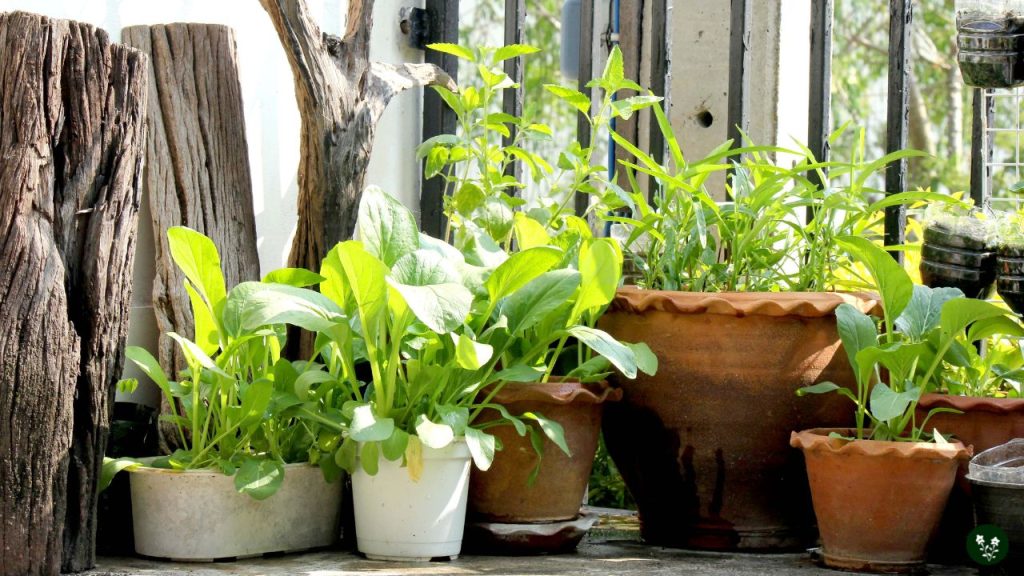
Growing spinach in pots is a great way to enjoy fresh, nutrient-rich greens without the need for a large garden. When it comes to choosing the right pot for your spinach, there are a few things to keep in mind:
- Size: Spinach plants need enough space to grow, so choose a pot that is at least 6 inches deep and 6 inches across. A round pot with a 14-inch diameter can accommodate up to four spinach plants.
- Depth: The pot should be deep enough to accommodate the roots of the spinach plant. A depth of between 6 to 8 inches is ideal.
- Drainage: Make sure the pot has drainage holes to allow excess water to escape. If the pot doesn’t have drainage holes, drill some yourself.
- Material: Choose a pot made of a durable material such as plastic, ceramic, or terra cotta. Avoid metal pots, as they can heat up and damage the roots of the plant.
When it comes to choosing the right potting mix, look for a mix that is well-draining and nutrient-rich. A pH level of between 6.0 and 7.0 is ideal for spinach plants.
Fill the pot with the potting mix, leaving about an inch of space at the top for watering.
By choosing the right pot and potting mix, you can ensure that your spinach plants have everything they need to thrive in a container garden.
2. Selecting Spinach Varieties
When it comes to growing spinach in pots, choosing the right variety is crucial. Here are some popular varieties of spinach that are well-suited for container gardening:
| Variety | Description |
|---|---|
| Baby’s Leaf Hybrid | A smaller variety that is perfect for container growing. |
| Melody | Another small variety that is known for its sweet flavor. |
| Space | A compact variety that is ideal for small containers. |
| Bloomsdale Long Standing | A popular variety that is known for its dark green leaves and high yield. |
When selecting spinach seeds, it’s important to consider the climate and growing conditions in your area. Some varieties may be better suited for cooler temperatures, while others may be more tolerant of heat and drought.
Be sure to read the seed packet or consult with a gardening expert to determine the best variety for your specific needs.
Additionally, consider the growth habit of the spinach variety you choose. Some varieties may be bushy and compact, while others may be more sprawling.
Selecting a variety that fits well in your container and has a growth habit that is manageable for your space is key.
3. Preparing the Potting Soil
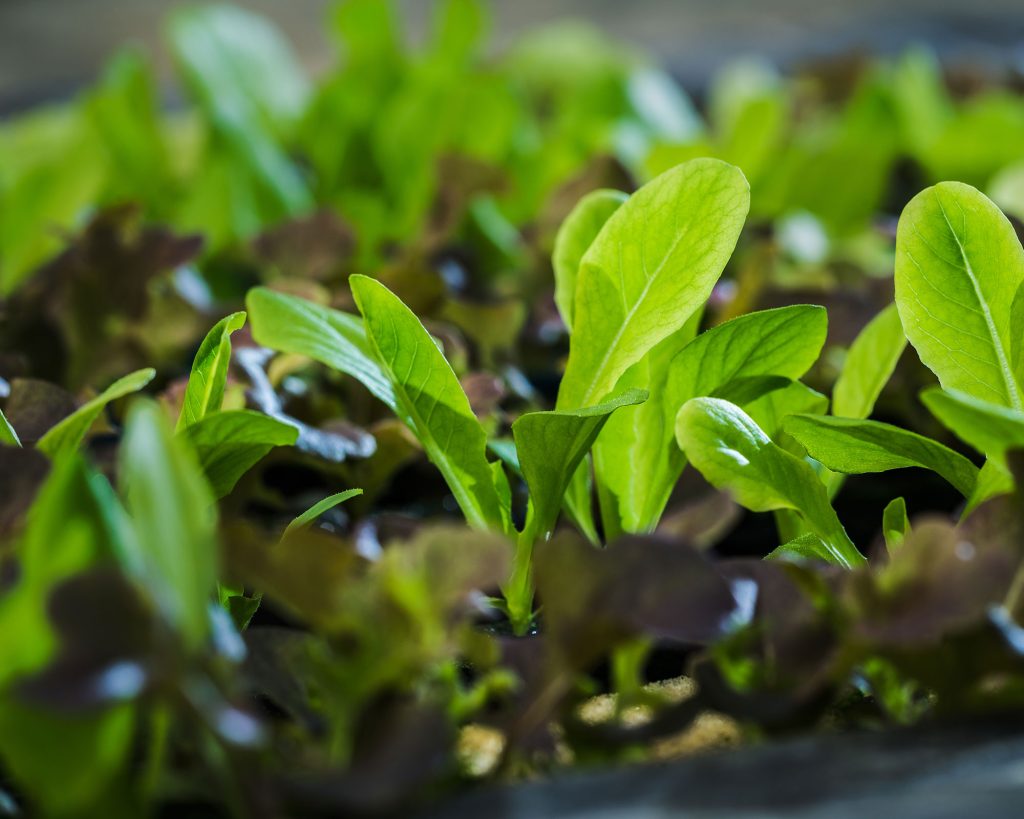
When growing spinach in pots, it is important to use a quality potting mix that is rich in organic matter. The texture of the soil should be crumbly and loamy to allow for proper drainage and aeration.
Here are some tips for preparing the potting soil:
- Fill the pot with the potting mix, leaving about an inch of space at the top.
- Add a slow-release fertilizer to the potting mix to provide the necessary nutrients for the spinach plants to grow.
- Water the potting mix thoroughly to ensure that it is evenly moist.
- Let the potting mix settle for a day or two before planting the spinach seeds.
It is important to note that spinach prefers a slightly acidic soil with a pH between 6.0 and 7.0. If the soil is too alkaline, the spinach plants may not be able to absorb the necessary nutrients.
To adjust the pH, you can add lime to the potting mix before planting.
Additionally, it is recommended to use a pot with drainage holes to prevent water from accumulating in the bottom of the pot and causing root rot.
If the pot does not have drainage holes, you can add a layer of gravel or perlite to the bottom of the pot to improve drainage.
4. Planting Spinach in Pots
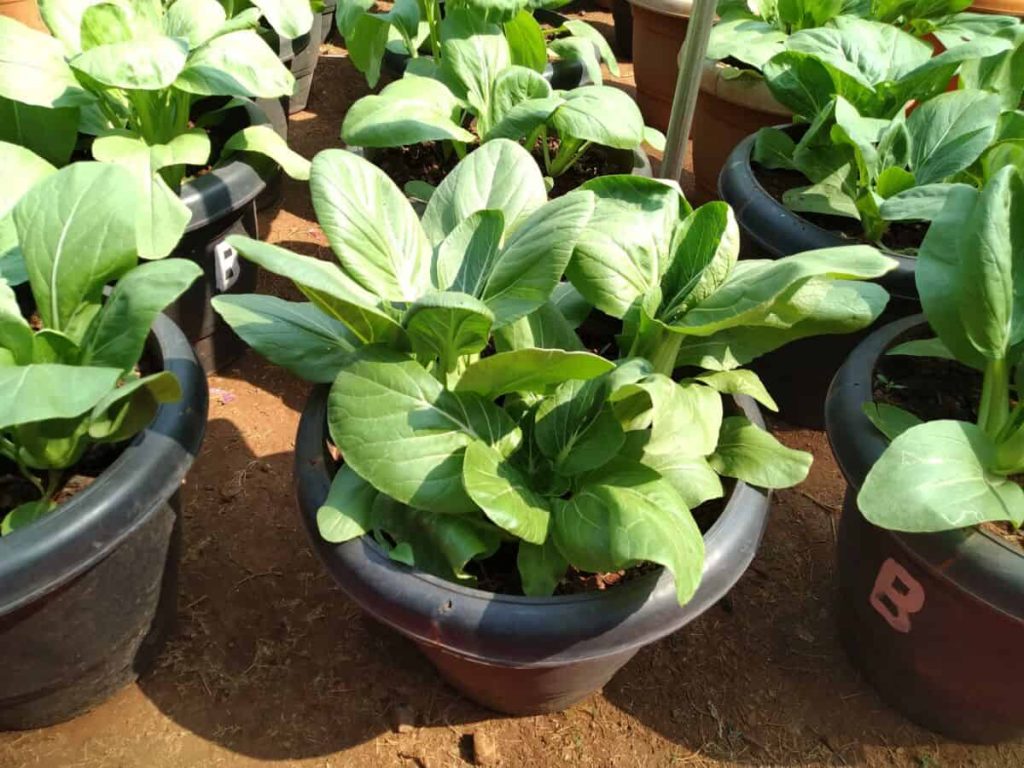
Planting Seeds or Seedlings
When it comes to planting spinach in pots, you have two options: planting seeds or seedlings. If you choose to plant seeds, scatter them over the soil surface and cover them with a thin layer of soil.
If you opt for seedlings, make sure you choose healthy ones that are at least two inches tall. Place them in the center of the pot and fill the remaining space with soil.
Spacing the Seeds and Covering with Soil
When planting spinach seeds, make sure to space them about one inch apart to allow room for growth. Cover the seeds with a thin layer of soil, about ¼ inch deep.
If you are planting seedlings, make sure to space them at least three inches apart to give them enough room to grow. Cover the roots with soil and gently press down to secure them.
Best Time to Plant Spinach in Pots
The best time to plant spinach in pots is during the spring or fall when temperatures are cooler. Spinach prefers cooler temperatures, and planting during hot weather can cause the plant to bolt and become bitter.
If you live in a warmer climate, consider planting spinach in a partially shaded area to help protect it from the sun’s heat. Overall, planting spinach in pots is a great way to grow this nutritious vegetable in a small space.
By following these simple steps, you can enjoy fresh spinach all year round.
5. Watering and Fertilizing Spinach in Pots
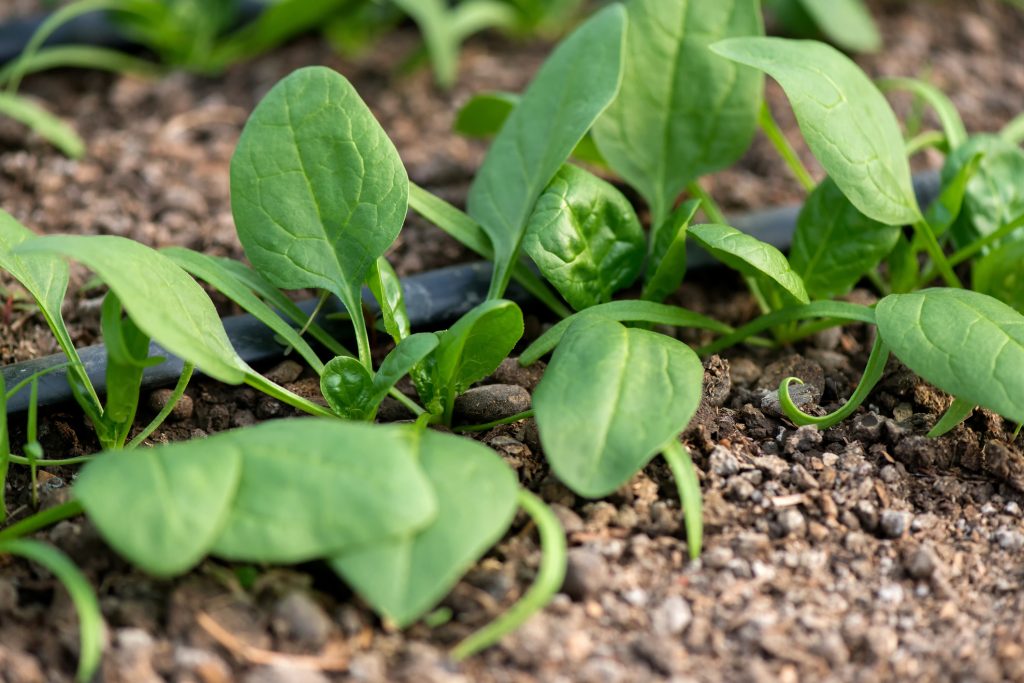
Proper Watering Techniques
Watering is a crucial aspect of growing spinach in pots. Spinach requires consistent moisture to thrive, but overwatering can lead to root rot. To avoid overwatering, ensure that the pot has proper drainage holes and use a well-draining potting mix.
Water the spinach deeply once or twice a week, depending on the weather conditions and the size of the pot. Check the soil moisture level by inserting your finger about an inch into the soil.
If it feels dry, it’s time to water. Avoid getting water on the leaves as this can lead to fungal diseases. Instead, water the soil directly at the base of the plant.
Types of Fertilizers
Spinach is a heavy feeder and requires regular fertilization to grow and produce healthy leaves. There are two main types of fertilizers: organic and synthetic.
Organic fertilizers, such as compost, manure, and fish emulsion, are slow-release and provide a steady supply of nutrients to the plant. Synthetic fertilizers, on the other hand, are fast-acting and provide a quick boost of nutrients.
Both types of fertilizers have their advantages and disadvantages, so choose the one that suits your needs and preferences.
Proper Application of Fertilizers
When applying fertilizers, follow the manufacturer’s instructions carefully. Over-fertilizing can lead to nutrient burn and damage the plant. Apply the fertilizer evenly around the base of the plant, taking care not to get it on the leaves.
Water the plant immediately after fertilizing to help the nutrients reach the roots. Avoid fertilizing during hot weather or when the soil is dry, as this can also damage the plant.
6. Maintaining Spinach in Pots
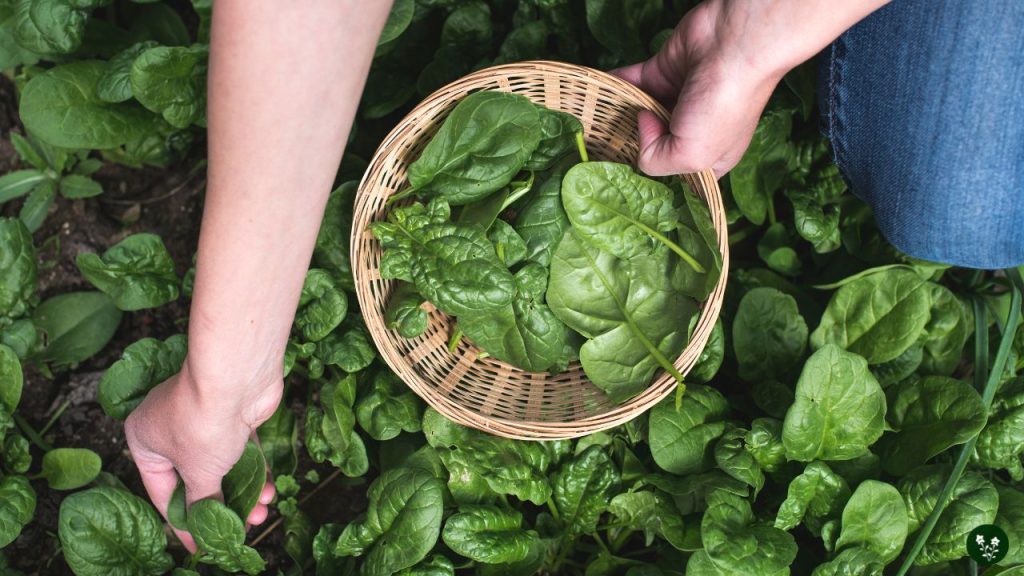
Pruning
Pruning is essential to keep your spinach plants growing and healthy. Regular pruning will help to promote new growth and prevent overcrowding.
When your spinach plants reach a height of about 3 inches, you should begin pruning the outer leaves. This will encourage the plant to produce new leaves and prevent it from becoming too tall and leggy.
Pest Control
Spinach is susceptible to various pests, including aphids, spider mites, and leaf miners. To prevent these pests from damaging your plants, you should regularly inspect your spinach plants for signs of infestation.
If you notice any pests, you can use insecticidal soap or neem oil to control them.
Preventing Common Spinach Problems in Pots
There are several common problems that can occur when growing spinach in pots. The most common problem is overwatering, which can lead to root rot and other fungal diseases.
To prevent overwatering, you should ensure that your pots have proper drainage and only water your plants when the top inch of soil is dry to the touch.
Another common problem is nutrient deficiency, which can cause stunted growth and yellowing leaves. To prevent nutrient deficiency, you should fertilize your spinach plants every two to three weeks with a balanced fertilizer.
Finally, spinach plants grown in pots can be prone to bolting, which is when the plant produces flowers and goes to seed prematurely.
To prevent bolting, you should ensure that your plants are not stressed by heat or lack of water, and you should harvest your spinach regularly to prevent it from becoming too mature.
7. Harvesting Spinach in Pots
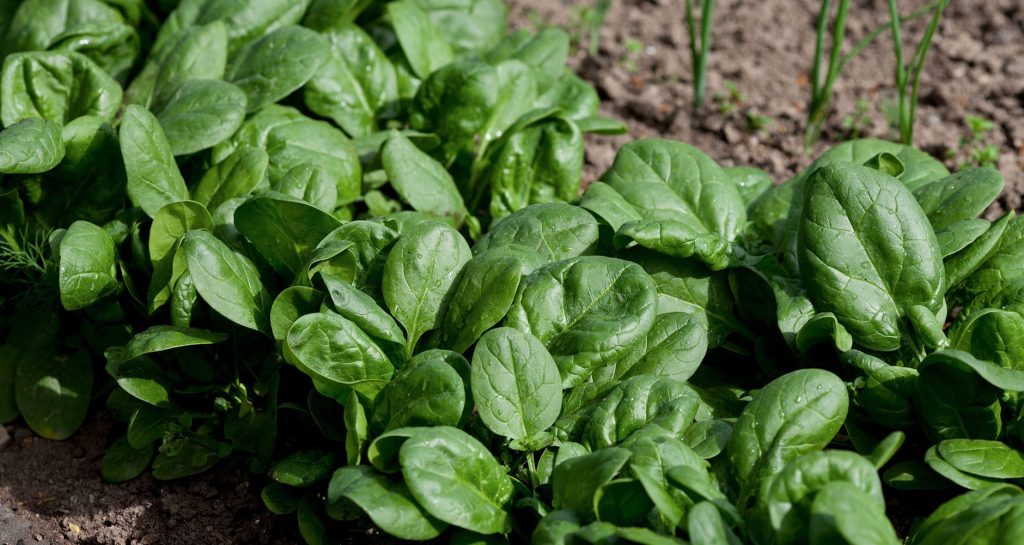
Once your spinach plants have reached maturity, it’s time to start harvesting. Spinach leaves can be harvested when they are 2-3 inches long, and you can continue to harvest them as they grow.
It’s important to harvest the leaves frequently to encourage new growth and prevent the plant from bolting.
To harvest spinach, simply use a pair of scissors or a sharp knife to cut the outer leaves off, leaving the inner leaves to continue growing. Avoid pulling the leaves off, as this can damage the plant and slow down growth.
When harvesting spinach, it’s important to pay attention to the weather. Spinach leaves are best harvested in the morning when they are crisp and cool.
If you harvest in the heat of the day, the leaves may wilt and become less flavorful.
Harvested spinach can be stored in the refrigerator for up to a week. To store, rinse the leaves in cold water and pat them dry with a paper towel. Place the leaves in a plastic bag or container and store in the refrigerator.
Conclusion
Growing spinach in pots is a great way to enjoy fresh, healthy greens without needing a large garden space. With a little bit of planning and care, you can successfully grow spinach in containers right on your balcony or patio.
Remember to choose a pot that is deep enough and wide enough for your spinach plants to grow. Spinach needs regular watering, so be sure to check the soil regularly and water deeply when needed.
You can also consider adding compost or other organic matter to your potting mix to help retain moisture.
Starting your spinach seeds indoors and transplanting them into larger containers can also help ensure success. And be sure to keep an eye out for pests like aphids and slugs, which can damage your plants.
Overall, growing spinach in pots can be a fun and rewarding experience for gardeners of all levels. With a little bit of effort, you can enjoy fresh, delicious spinach all season long.